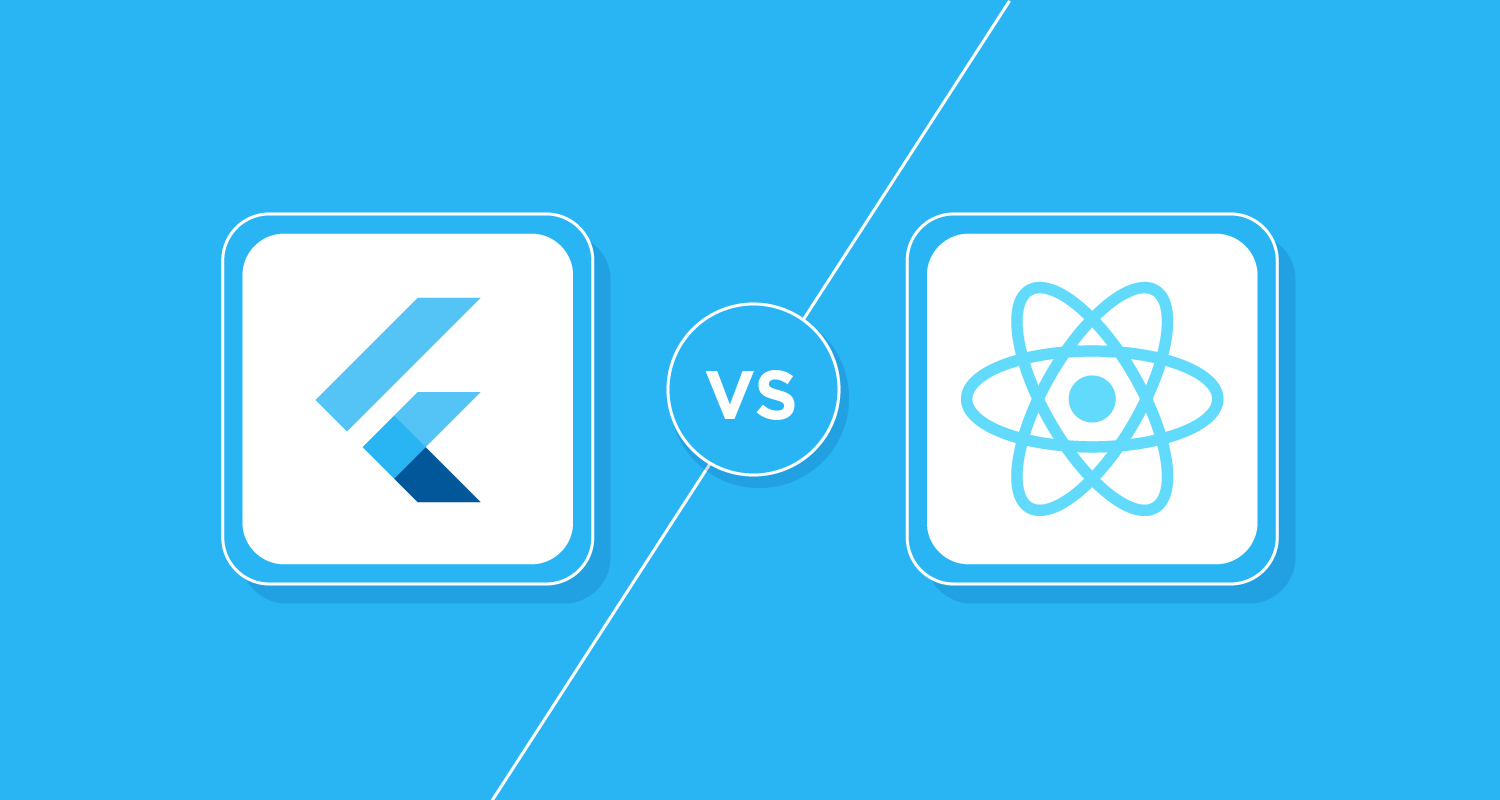Flutter vs React Native: Choosing the Right Framework for Your Project
Confused between Flutter and React Native? We break down the differences to help you choose the right framework for your app.

One's got Google swagger, the other rides Meta’s clout. But which one actually helps you ship faster and smarter?
If I had a rupee for every time a founder asked me “Flutter or React Native?”, I’d probably still be debugging a build pipeline—but from a beach in Goa. The debate is older than most startup POCs. Product managers love React Native for its webby roots. Flutter devs act like they’ve seen the light and now scoff at JSX like it’s dial-up internet.
So what’s the real story? Which one should you bet your next app—or startup—on? Let’s cut through the fluff and get you a builder’s-eye view of both. No sugar-coating, no Gartner quotes. Just lessons from the trenches.
The Promise (and Trap) of Cross-Platform
Write once, run anywhere… except when you can’t.
The dream is seductive: a single codebase that works on iOS, Android, maybe even web and desktop if you squint hard enough. But every developer who’s been burned by platform-specific quirks knows the reality is more nuanced.
At 1985, we’ve shipped products using both Flutter and React Native—from MVPs raised on shaky funding rounds to full-scale consumer apps with millions of downloads. What we’ve learned is simple: cross-platform tools save time... until they don’t.
And that breaking point depends on what you’re building, how fast you need to move, and how deeply you care about pixel perfection or performance.

React Native: Familiar Territory, Facebook Backing
If you're a JavaScript shop, this is your obvious starting point.
React Native is the cool older cousin who knows their way around both Android and iOS, speaks fluent JavaScript, and has a massive open-source gang backing them up. Meta uses it internally, so it gets serious updates—just not always on your timeline.
Why React Native wins hearts:
- You already have JS/TS developers on the team
Let’s be honest—finding a solid React Native dev is way easier than hunting Flutter unicorns in certain markets. - Access to a mature ecosystem
From navigation to state management to Firebase wrappers, React Native has everything… and 12 ways to do it, each with their own Stack Overflow drama. - Hot reload and dev experience are solid
Still not perfect (hello, Metro bundler crashes), but fast enough for iterative builds.

Where it bites back:
- Bridge performance
That infamous JS bridge can slow things down if you're pushing high-frequency animations or real-time features. - UI inconsistencies
It renders native components under the hood, which sounds great—until you get bitten by iOS 17 changing a default behavior and suddenly your Android-perfect screen looks like a meme on iPhone. - Upgrade nightmares
Ever tried upgrading a complex React Native project after 18 months? It’s like trying to rebase a Git branch after Diwali break.
Think React Native is like Batman: efficient, gritty, built with tech duct tape… but when stuff breaks, it breaks hard.

Flutter: Google’s Vision of UI Nirvana
Widgets all the way down. Or up. Or sideways. Because everything is a widget.
Flutter came in hot in 2017 and quickly became the darling of mobile devs who love control—and hate HTML/CSS/JS soup. It uses Dart (yeah, that’s a language), compiles ahead-of-time, and draws every pixel from scratch using Skia.
Why Flutter feels like a superpower:
- Consistent UI across platforms
Since Flutter draws everything itself, your UI behaves identically on iOS and Android. No weird platform quirks. What you see is always what you get. - Insane performance
Because it compiles to native ARM code, Flutter screams. You can hit 60/120fps with buttery transitions, even on lower-end phones. - All-in UI and animation framework
Custom buttons, fancy micro-interactions, wild scroll physics—it’s all possible, and usually easier than in React Native.
Where Flutter humbles you:
- Dart learning curve
Dart’s not hard, but it’s unfamiliar. If your team is deep in JS land, expect onboarding friction. - Package maturity
While the ecosystem is rapidly growing, certain niche integrations (like video editing or BLE peripherals) can feel undercooked or community-maintained. - App size
Flutter apps are chonky. That “hello world” build might be 6–7MB minimum.
Think of Flutter as Iron Man. Flashy, futuristic, and built for control freaks. But God help you if your arc reactor—er, dependencies—fail during a critical build.
When We Picked the Wrong One
AKA: Mistakes were made, retrospectives were had.
One of our earlier clients wanted a sleek mobile-first fitness tracker with a ton of motion tracking, custom charting, and real-time sync. We picked React Native because their backend was in Node and the CTO liked React.
Big mistake.
The animations stuttered. Integrating with native health APIs needed custom bridging. Worst of all, debugging app freezes felt like playing Minesweeper with a blindfold. Midway, we switched to Flutter. It cost us two weeks, but saved the entire product.

On the flip side, we’ve seen clients insist on Flutter for a B2B app where the backend and web frontend were both in TypeScript. Two months in, their internal team just couldn’t keep pace. Code velocity dropped. We helped them rewrite the UI in React Native and had them shipping again in no time.
Moral of the story? It’s not about which framework is “better”. It’s about which one matches your constraints.

Flutter vs React Native: Decision Scorecard
Let’s break it down like an F1 pit crew: fast, focused, and brutally honest.
| Criteria | Flutter | React Native |
|---|---|---|
| Learning Curve | Medium (Dart is new for most) | Low (JS/TS is everywhere) |
| Performance | High (native-like, no bridge) | Medium (bridge can bottleneck) |
| UI Customization | Excellent (full control) | Good (native look, limited tweaks) |
| Ecosystem Maturity | Growing fast | Very mature |
| Team Availability | Moderate (fewer devs) | High (JS devs everywhere) |
| App Size | Larger | Leaner |
| Web/Desktop Support | Improving rapidly | Web via React Native Web (meh) |
| Dev Experience | Excellent (Flutter DevTools rock) | Good (Metro has mood swings) |
5 Quick Filters to Make the Call
- Are you building a consumer-facing app with slick animations?
Go Flutter. - Is your dev team already strong in JS/TS and shipping web apps?
Stick with React Native. - Need to integrate deep with native APIs (camera, sensors, BLE)?
Flutter gives more control, but either works—depending on plugin maturity. - Want to prototype fast and maybe throw the app away in 6 months?
React Native lets you move quicker if your team knows the ecosystem. - Planning for desktop/web support later?
Flutter has a better long-term multi-platform story—though still maturing.
Bonus Bytes: Red Flags to Watch
Flutter
- You’re forcing Dart on a full-stack JS team—expect resistance.
- You’re targeting ultra-low-end phones with tight APK size requirements.
React Native
- You care deeply about design fidelity and animations.
- You expect to future-proof against iOS/Android API changes—good luck.

Wrap-up: Pick Your Fighter—Then Build, Don’t Blame
So, Flutter or React Native? Here’s the truth: both are excellent choices when used wisely. Flutter is the cleaner, faster beast for UI-heavy apps. React Native wins on flexibility, community, and hiring ease.
At 1985, we’ve shipped with both. We’ve face-planted with both. What matters most? Matching the tool to the team, the project, and the timeline.
If you’re still stuck at the decision gate, just DM me. We’ll help you spin up a dev squad that builds fast, breaks less, and doesn’t need a week of setup just to push a button.
Need a brutally efficient dev squad to help you go from Figma to App Store? Hit up 1985’s Bangalore crew—zero timezone whiplash, all horsepower.
FAQ
1. Which framework delivers better performance for complex, animation-heavy apps?
Flutter typically delivers superior performance for animation-heavy apps because it compiles to native ARM code and doesn’t rely on a bridge between the UI and native modules. This allows for smoother transitions, better frame rates, and fewer performance hiccups, especially under load.
2. Is React Native a better choice if my team already knows JavaScript?
Yes, React Native is often the pragmatic choice if your devs are already fluent in JavaScript or TypeScript. It leverages the existing React ecosystem, which can shorten the ramp-up time, increase team velocity, and reduce context switching between platforms and the web.
3. How do Flutter and React Native differ in terms of UI consistency across platforms?
Flutter wins on UI consistency because it draws everything from scratch using its own rendering engine. React Native, by relying on native UI components, can look slightly different across platforms—especially if OS updates introduce changes to default behaviors or styling.
4. What’s the long-term maintainability outlook for both frameworks?
React Native benefits from a massive developer base and mature community, but maintaining projects over time can be painful due to breaking changes and native module dependencies. Flutter’s dependency on Dart and newer ecosystem poses less risk of JS fatigue, but you’re betting on Google’s continued support and the health of its relatively young plugin ecosystem.
5. Which framework is better suited for apps requiring native module integrations (e.g., camera, sensors, Bluetooth)?
Flutter offers more control and often cleaner integration for custom native modules, especially when you need pixel-perfect behavior or platform-specific customizations. React Native can handle native modules well, but the bridge model and community reliance for plugins can add overhead or inconsistencies.
6. How do build sizes compare between Flutter and React Native apps?
Flutter apps generally start with a higher baseline APK/IPA size due to the bundled rendering engine and assets. Even minimal apps can exceed 6MB. React Native apps tend to be lighter initially, especially if they reuse native components without bundling additional resources.
7. Which one has better support for multi-platform deployment (web, desktop, mobile)?
Flutter is architected from the ground up with multi-platform in mind and now supports stable releases for web and desktop (Windows, macOS, Linux), though not all plugins are web/desktop-ready. React Native can run on web via react-native-web, but it's often more patchwork and less cohesive for multi-platform goals.
8. Are there any notable differences in development tooling between Flutter and React Native?
Flutter's tooling, especially with Flutter DevTools and Visual Studio Code integration, offers a seamless, full-featured developer experience out of the box. React Native’s tooling has improved significantly, but Metro bundler quirks and fragmented third-party libraries can still make setup and debugging frustrating at times.
9. How do these frameworks compare in terms of community and ecosystem maturity?
React Native has a larger, older, and more battle-tested ecosystem, which means more tutorials, Stack Overflow answers, and mature third-party libraries. Flutter’s ecosystem is growing rapidly, and while it’s younger, many of its official packages are high quality and consistently maintained.
10. Should startups choose Flutter or React Native for their MVP?
If your MVP needs to impress with slick UI and animations or you’re targeting both Android and iOS equally, Flutter’s consistent rendering and performance make it a strong contender. If speed of iteration, hiring ease, and existing team familiarity matter more, React Native might help you hit milestones faster with fewer training bottlenecks.



